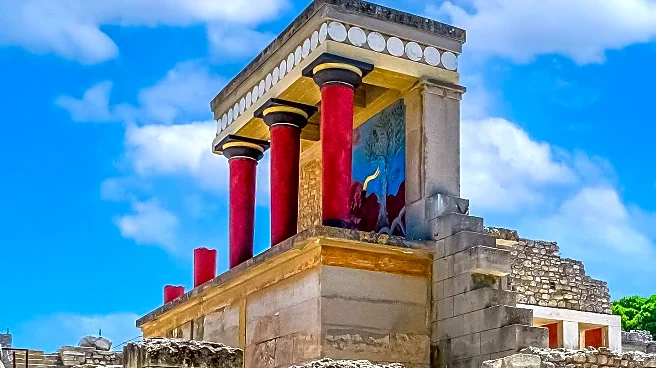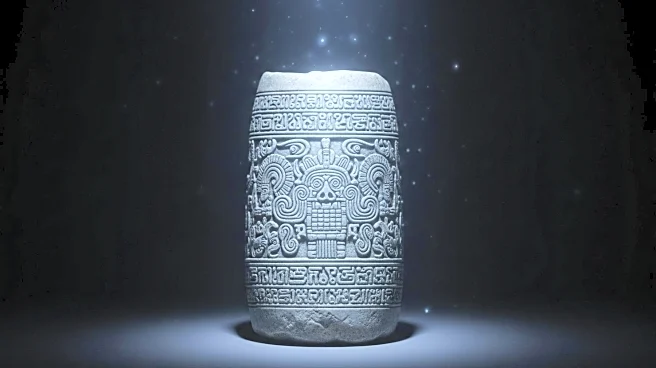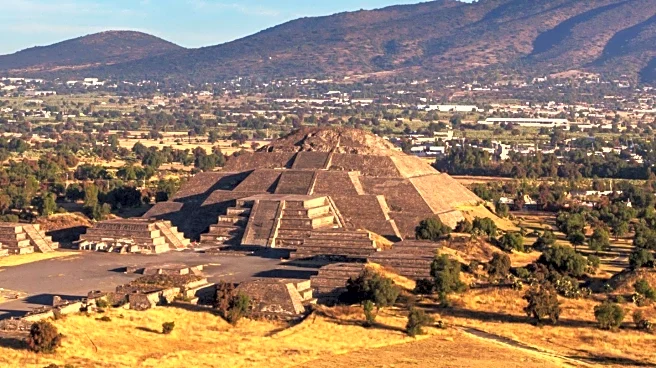What's Happening?
Archaeologists have uncovered an 11,000-year-old carved face on a pillar at the Neolithic site of Karahan Tepe in southeast Turkey. The pillar, featuring a prominent nose, deep-set eyes, and angular jawline, is the first of its kind to display a human face on a T-shaped monolith. These pillars are part of a prehistoric sanctuary known as Taş Tepeler, which includes the world’s oldest known temple complex, Göbekli Tepe. The discovery supports the interpretation of these pillars as symbolic representations of the human form, rather than mere architectural features. Excavations at Karahan Tepe began in 2019, and the site was occupied between 9400 and 8000 BC.
Why It's Important?
This discovery provides new insights into early human expression and the symbolic significance of Neolithic architecture. The carved face suggests that complex spiritual and artistic practices existed long before the advent of agriculture, challenging previous assumptions about the development of human civilization. The findings contribute to our understanding of cognitive transformations during the Neolithic age, offering a glimpse into the self-expression and cultural identity of early humans. The research at Karahan Tepe is part of Turkey's broader archaeological efforts, which aim to uncover and preserve the country's rich historical heritage.
What's Next?
Further excavations at Karahan Tepe and other sites within the Taş Tepeler region may reveal additional artifacts and structures that deepen our understanding of Neolithic culture. Continued research could lead to new interpretations of early human societies and their development. The Turkish government’s investment in archaeology may result in more groundbreaking discoveries, enhancing the country's cultural tourism and academic collaborations.











